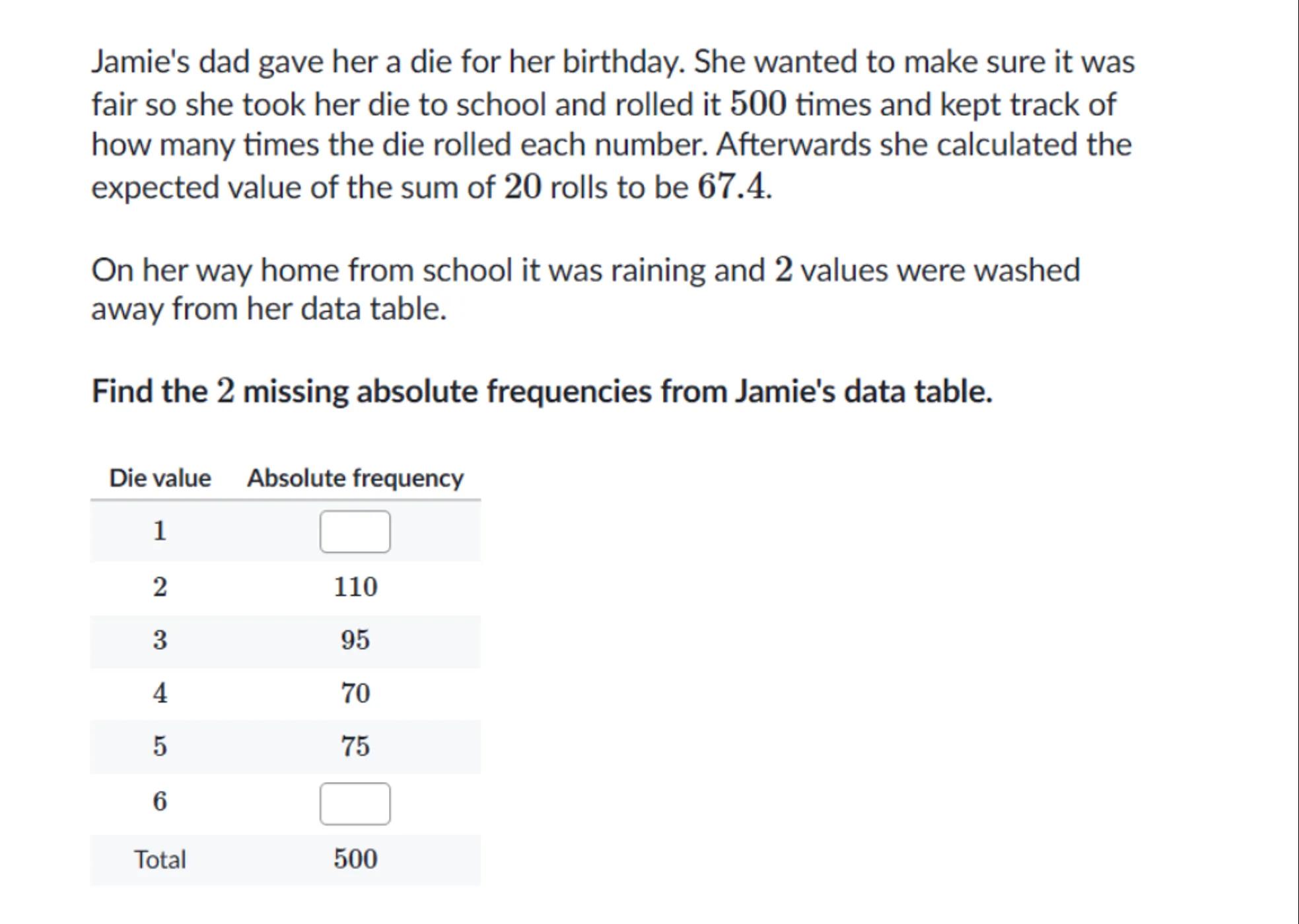
Sia

Question
Statistics
Posted 8 months ago
Jamie's dad gave her a die for her birthday. She wanted to make sure it was fair so she took her die to school and rolled it 500 times and kept track of how many times the die rolled each number. Afterwards she calculated the expected value of the sum of 20 rolls to be 67.4 .
On her way home from school it was raining and 2 values were washed away from her data table.
Find the 2 missing absolute frequencies from Jamie's data table.
\begin{tabular}{cc}
Die value & Absolute frequency \\
\hline 1 & \\
2 & 110 \\
3 & 95 \\
4 & 70 \\
5 & 75 \\
6 & \\
Total & 500
\end{tabular}

Answer from Sia
Posted 8 months ago
Solution by Steps
step 1
Identify the given information: The total number of rolls is 500. The frequencies for die values 2, 3, 4, and 5 are given as 110, 95, 70, and 75 respectively
step 2
Calculate the sum of the given frequencies:
step 3
Subtract the sum of the given frequencies from the total number of rolls to find the sum of the missing frequencies:
step 4
Let the missing frequencies for die values 1 and 6 be and respectively. We know that:
step 5
Use the expected value of the sum of 20 rolls to find another equation. The expected value of a single roll of a fair die is:
The expected value of the sum of 20 rolls is:
Given that the expected value of the sum of 20 rolls is 67.4, we can set up the equation:
step 6
Simplify the equation:
step 7
Solve the system of equations:
Subtract the first equation from the second:
Substitute back into the first equation:
Answer
The missing absolute frequencies are and .
Key Concept
The sum of the absolute frequencies must equal the total number of rolls, and the expected value can be used to set up an additional equation to solve for the missing frequencies.
Explanation
By using the total number of rolls and the expected value of the sum of 20 rolls, we can set up a system of equations to find the missing frequencies.
Not the question you are looking for? Ask here!
Enter question by text
Enter question by image
Unlock Smarter Learning with AskSia Super!
Join Super, our all-in-one AI solution that can greatly improve your learning efficiency.
30% higher accuracy than GPT-4o
Entire learning journey support
The most student-friendly features
Study Other Question